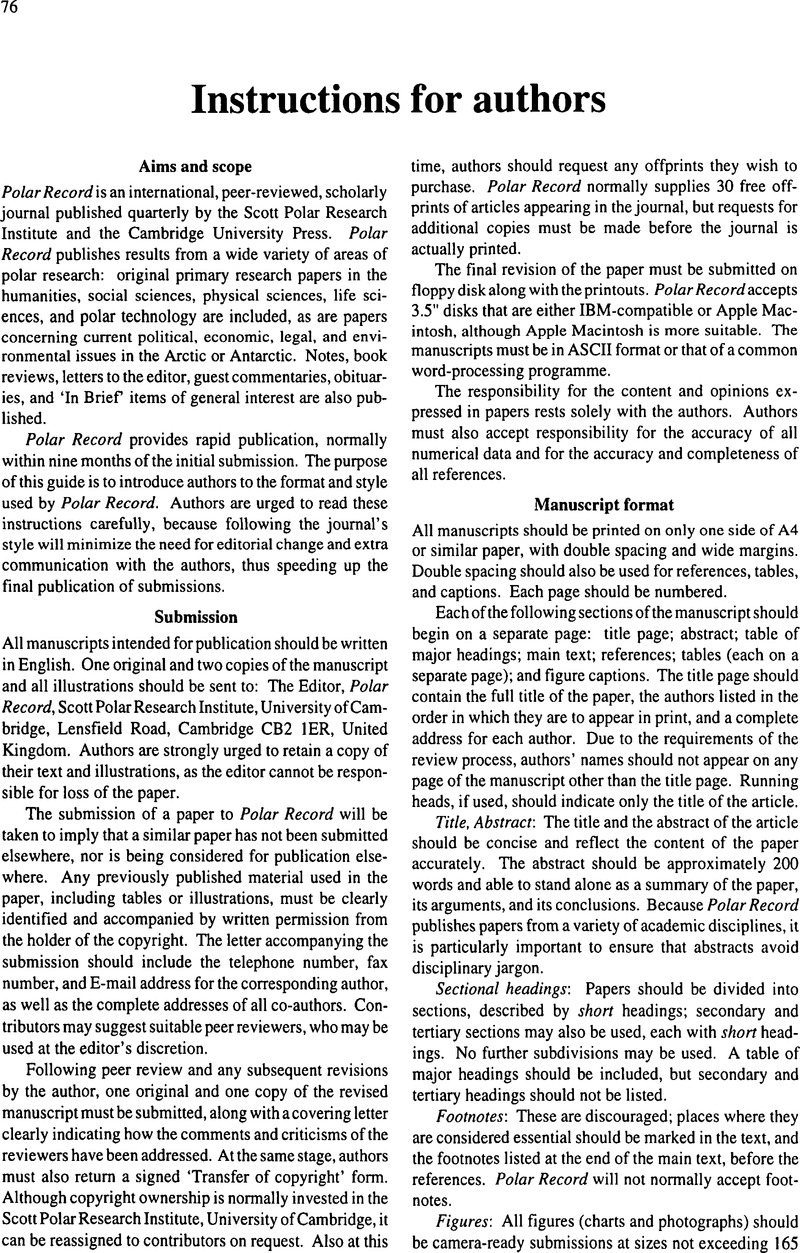No CrossRef data available.
Article contents
Instructions for Authors
Published online by Cambridge University Press: 27 October 2009
Abstract
An abstract is not available for this content so a preview has been provided. Please use the Get access link above for information on how to access this content.

- Type
- Instructions for Authors
- Information
- Copyright
- Copyright © Cambridge University Press 1998
References
Barr, W. 1983. The career and disappearance of Hans K. E. Krüger, Arctic geologist, 1886–1930. Polar Record 29 (171): 277–304.CrossRefGoogle Scholar
Colony, R. L, and Rigor, I.. 1991. Arctic Ocean data buoy program data report for 1 January 1988 to 31 December 1988. Seattle: Applied Physics Laboratory, University of Washington (Technical Memorandum APL-UW, TMB-91).Google Scholar
Cruwys, E. 1987. Tooth wear patterns in modern human populations. Unpublished PhD thesis. Cambridge: Department of Anthropology, University of Cambridge.Google Scholar
Derocher, A. E., Andriashek, D., and Stirling, I.. 1993. Terrestrial foraging by polar bears during the icefree period in western Hudson Bay. Arctic 46 (3): 251–254.CrossRefGoogle Scholar
Fogg, G. E. 1992. A history of Antarctic science. Cambridge: Cambridge University Press.Google Scholar
Gusev, B. V., Grikurov, G. E., and Polyakov, M. M.. 1972. Paleomagnetizm izverzhennich porod ostrova King Dzhordzh (Antarktika). [Palaeomagnetism of igneous rocks of King George Island (Antarctica).] Geofizicheskiye Metody Razvedki v Arktike 7: 105–109.Google Scholar
MacKenzie, J. M. 1993. Heroic myths of empire. In: MacKenzie, J. M. (editor). Popular imperialism and the military 1850–1950. Manchester and New York: Manchester University Press: 109–138.Google Scholar
National Science Foundation. 1992. Sites visited 1991/92 season. Unpublished document from the Fourth Antarctic Tour Operators Meeting, 25 June 1992. Washington, DC: National Science Foundation.Google Scholar


